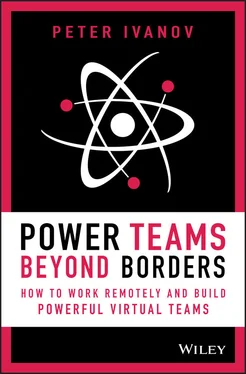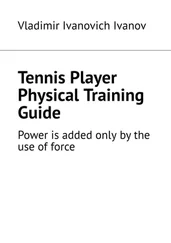Kaito visibly brightens. He seems to sit up straighter and there's a new energy to his speech. ‘Sure, I'm really pleased you want to work through this thoroughly.’
After half an hour, Adam can see why Kaito was so keen to start with solar energy and he is beginning to appreciate the business case for doing so. But his heart is still set on wind energy. Maybe we could do both?
‘This has been great, thank you,’ Adam says warmly and he means it. ‘I still want to go away and do a bit of research myself before we settle on solar along with wind, particularly in relation to the market in the UK, but I can feel myself leaning in your direction now.’
Kaito breaks into a grin. ‘Of course, I wouldn't expect you to make a decision like this immediately. I've got some notes that I'll send via email, it's just a few places where you can look for research and so on. It'll save you a bit of time anyway.’
‘Great, I'll pull together my research on wind energy and send that over to you as well. Where do we go from here?’ Adam asks.
‘We'll definitely need a financial expert,’ Kaito says, ‘Someone who can help us to raise the funds we need. How about Jeff? The guy from California who we met at that conference in 2012? Are you still in touch with him?’ Adam nods. ‘I am actually. I'll get in touch with him as soon as we're off this call and set up a meeting for the three of us.’
**************
The second rock for building your virtual power team is what's known as the Strengths Matrix. I'm a big believer in strength‐oriented management, which means you strengthen the strength instead of developing the weakness.
This isn't a new concept and it's certainly not my invention. In fact, Gallup has a book called StrengthsFinder 2.0 , which includes a very sophisticated test with 64+ questions to establish your key strengths and develop an action plan.
For virtual teams, I believe we need a more pragmatic approach that delivers faster solutions. There's an exercise I use, after the lifeline exercise I discussed earlier in this section, where I ask people to list their top strengths. I'll share the exercise with you in more detail in a moment, but first you need to understand why it's so important to identify each team member's strengths.
The reason is remarkably simple: if you discover someone's true strength, their real natural talent, and focus their work on this area then they don't consider it to be work. They feel joy, they're passionate and often the results are outstanding.
In general, I would say that there are three types of people:
Generalists
Specialists
Empaths
Generalists have a broad overview of what's going on and understand the big picture. These are the kinds of people that you want to put in roles where they're responsible for managing a particular client or stakeholder group. They'll maintain a relationship with those people and channel and manage any demands through the team.
Specialists have deep expertise in a particular field. These are the kinds of people I would nominate as knowledge champions in their field. That means that every time there's a deliverable within the team that falls under their area of expertise, they review it and suggest improvements or give feedback before it's disseminated more widely. In doing this, you show them that their expertise is valued.
Finally, there are empaths. These are the kinds of people who have a good sense of the emotion within the team and who are naturally great at relating to other people and fostering a positive team atmosphere. You might give them responsibility for taking care of a new team member induction, for instance. Even if your HR team has an induction process, don't underestimate the benefits of giving them a buddy, so to speak, within the team they're joining. These people are key.
Those are some basic examples of how you can leverage someone's natural strengths to generate additional meaningful interactions and improve team spirit.
Think back to Adam's story. What groups would you put his early team members into? It's fair to say that Kaito is a specialist. Adam is a generalist. Would you also class Jeff as a specialist? At this stage, Adam's wife Rose is playing the part of the empath.
How to Uncover People's Natural Strengths
I like to believe that everyone has a superpower. It's what I call people's natural strengths.
Uncovering each person's superpower is essential for building an effective virtual team. I'm going to give you a simple exercise now that you can try with your team. Begin by splitting into pairs. One person will be the coach and the other will answer the questions, then they'll swap. Here the questions everyone should ask (and answer):
1 What do you find easy and fun to do in your job?
2 What is your biggest success so far?
3 What do people most often ask you for help with?
4 If I were to ask your best friend what your biggest strength is, what would they say?
5 From everything you've just told me, what do you think your biggest strength is?
Then the coach says, ‘From everything I just heard, I think your biggest strength is….’
By the end of this exchange, you should have two strengths listed for each person. One that they have identified themselves and one that their ‘coach’ has identified. Capture both of these strengths in the Strengths Matrix. I'd encourage you to use different colours for each, for example red for the individual perspective and blue for the external perspective.
The next step in this exercise is for each person to share their superpowers with the rest of the team. But before they do that, give them some time to come up with an avatar who shares their strengths. This can be a comic book character, a superhero, a celebrity, a politician – anyone who inspires you. This brings some humour and fun to the exercise.
What you find when you go through this exercise, especially after having plotted everyone's lifelines as I discussed in the last chapter, is that everyone begins to feel special because they can see the strengths and talents they're bringing to the table. But this also has an incredible effect on the team as a whole, who will now feel as though they can achieve anything they set their minds to because of the Strengths Matrix they can see before them.
The other advantage to setting up a Strengths Matrix is that you'll improve everyone's enjoyment of their job and therefore their quality of work. By allowing people to work on tasks that play to their strengths, not only will they enjoy their job more but they'll be more productive and produce better outcomes as a result.
This will also be important when it comes to setting goals and building a roadmap for your team. Once you have created a Strengths Matrix, you won't need to delegate tasks. Your team members can choose their own goals and tasks based on their strengths. This leverages their talent and creates more ‘gravity’ within your team. Remember how important that is for bringing everyone together and keeping them focused.
How this Works in Practice
I'd like to give you a real‐life example of where this worked in practice. I have a client in New York, who runs a massive open online course (MOOC) teaching modern architecture. To prevent this from being too dry, he has a live case study that everyone on the course works on.
The case study is designing and building resilient schools in the Philippines. You may remember that this country has suffered from earthquakes and tsunamis in the past. As a result of these natural disasters, the government in the Philippines decided to construct schools that were robust enough to enable them to be used as emergency shelters in the event of natural disasters such as these.
Читать дальше












